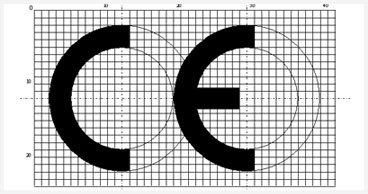Europe Medical Device Registration – Compliance with European Directives (MDD, AIMD, IVDD) or Regulations (MDR, IVDR)
 The European Community has formally adopted several Directives (or regulations – see below) that apply to the Europe Medical Devices Registration. This means that any company, interested in selling a product in one of the European Community countries, must comply with the requirements of the applicable Regulation and must mark its product with the CE symbol according to those requirements. Since 26 May 2021 the Medical Device Regulation 2017/745 which entered into force on 25 May 2017 became mandatory and replaced the Medical Device Directive and the Active Implantable Medical Device Directive (those are no longer an option to obtain CE marking). Regarding the In Vitro Diagnostic Regulation 2017/746 the date of entry into force was also 25 May 2017 and it will become mandatory on 26 May 2022.
The European Community has formally adopted several Directives (or regulations – see below) that apply to the Europe Medical Devices Registration. This means that any company, interested in selling a product in one of the European Community countries, must comply with the requirements of the applicable Regulation and must mark its product with the CE symbol according to those requirements. Since 26 May 2021 the Medical Device Regulation 2017/745 which entered into force on 25 May 2017 became mandatory and replaced the Medical Device Directive and the Active Implantable Medical Device Directive (those are no longer an option to obtain CE marking). Regarding the In Vitro Diagnostic Regulation 2017/746 the date of entry into force was also 25 May 2017 and it will become mandatory on 26 May 2022.
The requirements of the CE can be divided into two major categories:
- Quality system Requirements, with which the manufacturer should comply, regarding the development and the manufacturing of the product.
- Safety and reliability requirements the product should meet, which includes items such as biocompatibility, software validation, electrical safety, electromagnetic compatibility (EMC), performance evidence, technical performance evidence, and pre-clinical and clinical evidence.
How to achieve Europe Medical Device Registration and apply CE mark ?
In order to get CE mark, you need to comply with one or more of the following requirements:
- Establish and maintain a Medical Quality Management System (QMS)
- Test your product in order to demonstrate compliance with applicable standards
- Prepare a Technical File / Design Dossier for each family of products that you wish to obtain CE mark for.
- Contract a European Authorized Representative.
- Contract a Notified Body who will audit your Quality Management System and Technical Files / Design Dossiers.
- Register your company and list your product with at least one European Competent Authority.
The actual requirements for your family of products are subjected to the classification of your devices. This classification is based on the level of risk your device contains.
Here are some examples of devices relating to product classification:
- Class I: EEG and EMG Electrodes, non-invasive. Scalpels. Dental Drills. Wound Management systems. Hearing Aid Tester.Corrective glasses. Examination gloves. Hospital beds.Scalpels. Stethoscopes for diagnosis. Stomach pumping tubes. Stretchers. Syringes without needles. Wheelchairs.
- Class IIa: All patient monitoring equipment, Syringes. Needles, for syringes. Blood oxygen analyzers. Contact lenses. Crowns. Extracorporeal Circulation Devices. Infusion cannula. Muscle stimulators. Sterilizers for medical devices. Nebulizers. Ultrasound diagnostic equipment. External ECGs.
- Class IIb: Lasers Devices for application. Internal ECGs. RF Generators. Non-energized implants. Brachytherapy devices. Condoms. Defibrillators, external. Hemodyalizers. Incubators for babies. Infusion pumps. Lenses, intra-ocular. Lithotriptors. Lung ventilators. Anesthesia machines.
- Class III: Energized implants All Intracardiac applications. Bone cements, with antibiotic. Catheters, angioplasty balloon. Catheters, with radioisotopes. Collagen implants. Contraceptive intrauterine devices (IUDs). Electrodes, neurocortical. Prosthetic heart valves. Shunts, carotid artery. Sutures, absorbable . Vascular stents. Bioactive implantable devices.
